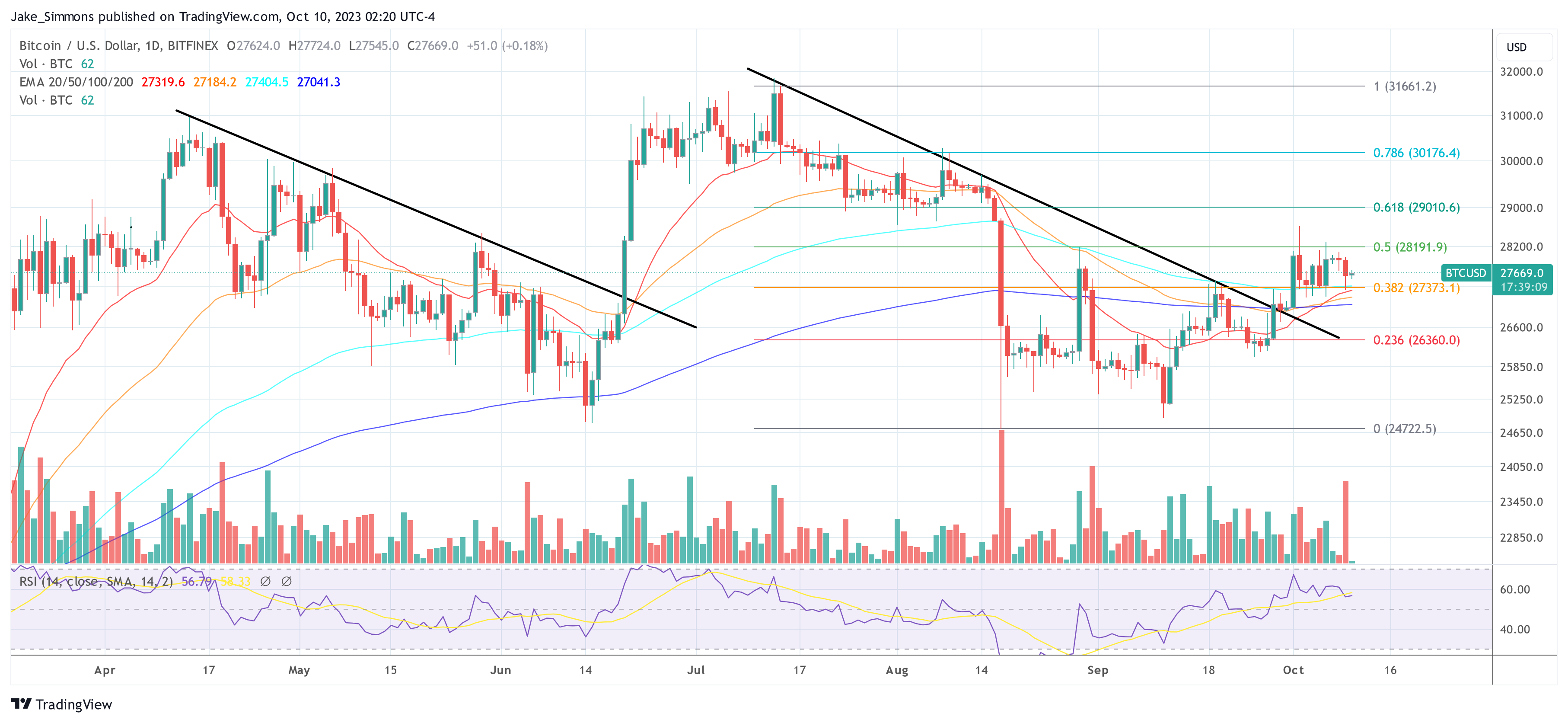The Bitcoin developer community is no stranger to innovation. To the end, Robin Linus, the leader of ZeroSync, which is behind the development of a zk-proof light client for Bitcoin, unveiled the “BitVM: Compute Anything on Bitcoin” white paper yesterday. This paper presents a groundbreaking methodology that could potentially redefine the perception of Bitcoin’s capabilities.
BitVM introduces a computing paradigm that can express Turing-complete Bitcoin contracts. The significance here is that it does not necessitate any modifications to the network’s consensus rules. Instead of executing computations directly on Bitcoin, these computations are merely verified, drawing parallels with the process of optimistic rollups.
Online forums, particularly the community on Reddit, have been buzzing with excitement. Under the headline “The release of BitVM renders all altcoins useless. Compute anything on Bitcoin without a fork.” the proposal is hotly debated on Reddit, as well as on X (formerly Twitter).
Can Bitcoin Render All Altcoins Useless?
Bob Bodily, the CEO of Bioniq Market, offered his insights via a tweet: “BitVM is a new Optimistic Roll Up + Fraud Proof + Taproot Leaf + Bitcoin Script computing paradigm designed by Robin Linus at Zero Sync. While it offers the core benefit of enhanced programmability on BTC without any upgrade, it’s important to note that BitVM is slower, more expensive, and has more complexity compared to EVM.”
Sam Parker, Head of Technology and co-founder of Blockchain Transition elaborated, “Bitcoin is now as Turing Complete as any other chain, and this requires zero changes to Bitcoin.” However, he also clarified that while Bitcoin might seem more Turing Complete technically, it has been furnished with a runtime that makes it “Turing complete enough” for any realistic program one might wish to execute.
Parker also emphasized the non-compulsory nature of BitVM. Users who do not wish to trust their coins in a Turing complete contract don’t have to. He further mentioned potential uses such as eliminating the reliance on centralized “Bitcoin edge” services and advocating for a move from trusted/semi-trusted services to a fully trustless interaction.
Taproot Wizard Eric Wall, after going through the whitepaper, expressed cautious optimism. He voiced reservations about the setup phase, specifically concerning very large pre-signed transaction exchanges, but was eager to see real-world experiments. He posited, “If BitVM functions efficiently to verify a zk proof within it, then BitVM would assume the role of the zkwasm layer.”
Wall summarized BitVM’s current function succinctly, suggesting that it outlines a way for a verifier to appropriate a bond from a prover based on the result of a Turing complete computation. However, it doesn’t yet fully detail an architecture for peg-in/outs for external participants.
More Skeptical Voices
Blockstream CEO Adam Back’s response was more critical. He likened it to Greg Maxwell’s 2016 ZKP contingent payments implemented example. However, Robin Linus, countering Back’s point, stated, “In a ZKCP, the prover has to know the solution upfront,” implying the superiority of BitVM over Maxwell’s 2016 ZKP example.
Super Testnet, one of the reviewers of the article, called this development perhaps “the most exciting discovery in the history of Bitcoin script.” The potential access to covenants, sidechains, and powers akin to Liquid or the EVM, without the need for forks, makes it a monumental step.
However, some complexities surrounding BitVM cannot be overlooked. As developer Rijndael pointed out, the use of CTV (BIP-119 = Simple Covenants) could make BitVM more efficient. The consensus was that BitVM’s potential could be immense, but its real-world applicability and how it might impact existing systems remain to be seen.
Maxim Orlovsky, from the LNP/BP Standards Association, lauded the innovation but also raised concerns. He stated, “Real-world programs, including things like zk-STARKS, require multiplication and modulo division, which are absent in Bitcoin script. For any realistic implementation, this might not fit into even 2^127 NAND gates, a restriction imposed by BTC consensus. While it’s a remarkable computing science exercise, practical results might require years or perhaps even a soft fork.”
So, does the introduction of BitVM signify the end of altcoins? Given the aforementioned limitations and challenges, the consensus seems to gravitate towards a resounding “probably no.” While BitVM undeniably augments Bitcoin’s capabilities, there are diverse challenges to overcome.
At press time, BTC traded at $27,669.






